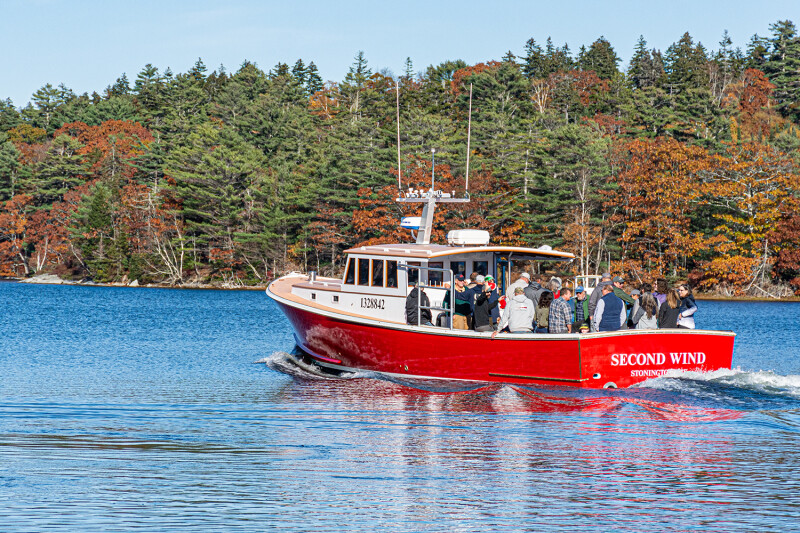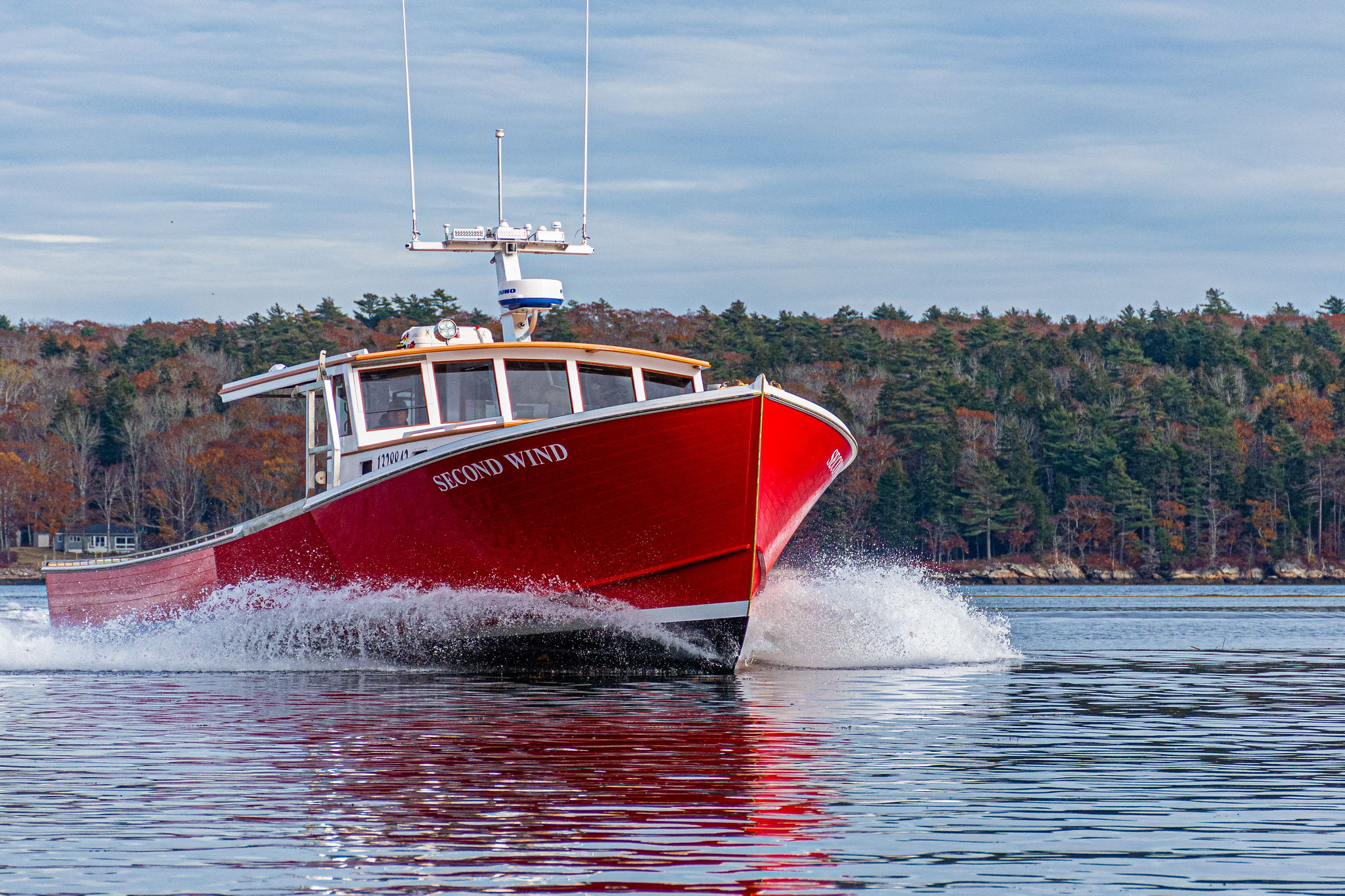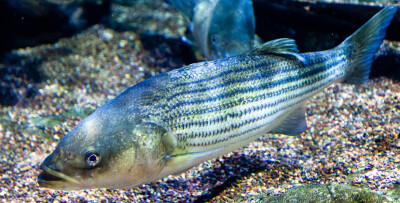On a bright sunny Oct. 2, about a year after its keel was laid, the Second Wind was launched at John’s Bay Boat Co., South Bristol, Maine.
The 47’x14’ wooden lobster boat is the 76th wooden boat Peter Kass has built since starting his boat yard in 1983. Over 50 have been lobster boats.
While the Second Wind was built for Stonington, Maine, lobsterman Chris Klemenz, the design dates back to a boat Kass built for a relative of Klemenz nearly ten years ago.
That boat, the Khristy Michelle, was built by Kass and his crew for Klemenz’s uncle, John Williams, another lobsterman from Stonington. The 44-foot lobster boat with a 14-foot beam was built “with an eye on efficiency in fuel consumption and in building,” says Kass, and with a 500-hp Cummins QSM 8.3 there was lower upfront cost and lower operating costs.
Chris Klemenz worked “on the boat a little bit, watched her a lot and wanted one like that,” says Kass, adding Klemenz thought “why not go a little longer,” which accounts for the major difference between the two boats - three feet.
The Second Wind’s 14-foot beam is a bit narrower than that of the standard 47-foot lobster boat built at John’s Bay. “Normally for us it would be 16 feet, and by Down East standards it would be a canoe,” quips Kass. He’s referring to boats built along Maine’s northeast coast; an example is an Osmond 47-footer with a 19-foot 2-inch beam.
Kass normally carves a new half-model when he builds a hull appreciably different from previous boats. That wasn’t necessary for the Second Wind. “It was basically the same shape (as Williams’ boat), just spread the molds further apart,” says Kass.
Other than the additional length, the Second Wind’s hull is identical to the Khristy Michelle. That includes 1 1/4-inch cedar planking on 1 1/2” x 2 1/2” white oak frames over a 7-inch oak keel. The deck is planked and caulked 1 1/2-inch fir on oak beams.

Below deck is a 500-gallon fuel tank, but no below-deck lobster tanks; lobsters and bait are stored on deck in fiberglass tanks.
The split wheelhouse “is typical of what we usually do,” says Kass, though with varnished, raised-panel cupboards and drawers it’s not typical of most lobster boats. Since Klemenz, his wife and two daughters often go for weekend cruises, up forward are four bunks, a settee for four, a propane stove and running water.
Power comes from a 550-hp, 9-liter John Deere that allows the Second Wind to cruise at 16 knots. “Chris says he’s burning the same fuel he did with his old boat,” says Kass. That was a 37-footer from Mount Desert Island Boatworks in Southwest Harbor, Maine, with the same model John Deere that’s in the Second Wind.
As soon as the Second Wind left for Stonington, Kass and his crew started preparing the keel for the next boat, a 44-foot pleasure boat going to Westport, Mass.
“It’s pretty much Chris’ boat but back to the original length (44 feet),” notes Kass. Though with a lot more “house” on the deck there won’t be any chance to mistake it for a lobster boat.
The boat to be built after that one is another pleasure boat, says Kass, noting that two such boats in a row is “unusual.” With the new North Atlantic right whale gear restrictions surrounding New England lobstermen, Kass says he’s not surprised that lobstermen are less willing to step up and have a new boat built.








